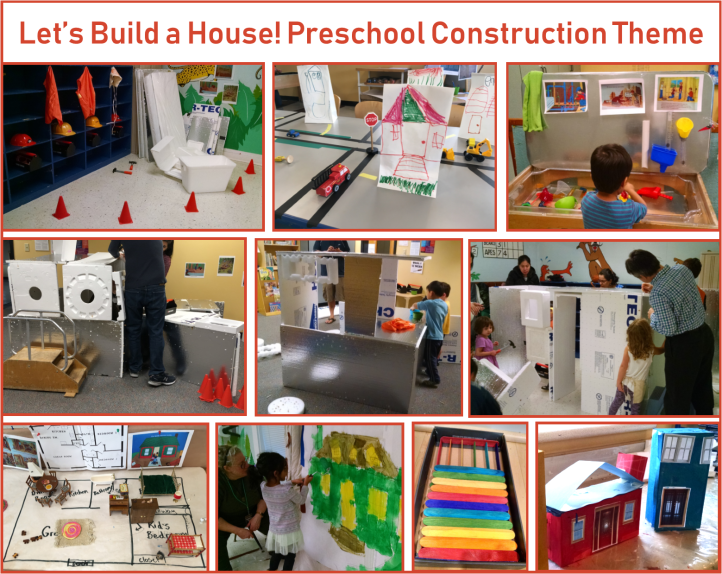
We continued our Engineering theme with a class about building houses.
Question of the Day: What are the steps in building a house?
Challenge: Can you build a house with friends?
Incorporating Books into the Lesson: We had three different books that are about the process of building a house.
- Building a House by Barton is a nice simple book for ages 3 to 5 about each of the steps in building a house.
- Building Our House
by Bean is great for ages 4 to 6. It tells the story of a family building their own house. Told from the perspective of a young child.
- How a House Is Built
by Gibbons – I find some of the details in this book are more than a child age 5 – 8 would care about, but the illustrations are good.
We photocopied and printed copies of many of the pages, and posted those pictures near the activity related to that step in the book to help give context to the activities we were doing. We later used these books in circle time, where they wove together the story of our separate activities into a whole process. Here is a pdf of the pages from Barton.
Note: If you would like to have a full curriculum based on one book, I have an alternative lesson plan for building a house that is all tightly focused around the Barton book, with activities to match virtually every page. Check it out here.
Build a House!
We use foam insulation panels plus golf tees and toy hammers to assemble a building. This is one of my all-time favorite collaborative activities for kids age 3 – 7. I first saw it at a construction themed birthday party. (Read more here: https://gooddayswithkids.com/2014/12/18/kids-construction/.) Kids LOVE to hammer and feel like they’re building “something real.” It can keep them entertained for hours!
Here are some of our buildings. (Learn lots more about this house-building project.)
One of the great things about this project is that it’s highly collaborative. It’s almost impossible to fit two panels together by yourself – you need someone to help hold it while you get those first few nails in. This leads to lots of good teamwork and negotiation as they agree on a plan.
 Construction worker Dress Up. We had construction helmets, safety vests, goggles, and a Home Depot tool apron, plus construction cones to set up around our “work site” to add to the fun of the day.
Construction worker Dress Up. We had construction helmets, safety vests, goggles, and a Home Depot tool apron, plus construction cones to set up around our “work site” to add to the fun of the day.
More Activities – Stages of House Construction
The Design Process – Blueprints (Crayon Resist)
We set out white crayons and white oil pastels so they could draw floor plans or house designs or whatever they wanted, and then paint over them with thinned blue tempera paint and a roller brush. (Idea from No Time for Flashcards.) We put up pictures of blue prints from our books.
Excavation – the sensory table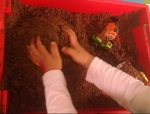
One year, we had sand, buckets and shovels. Most years, we put out brown cloud dough – it looks like rich, brown dirt, but it’s made of flour, cocoa powder, and vegetable oil, so it smells good and is a good option for a sensory bin if you have little ones who might eat dirt. We put in a collection of toy bulldozers and dump trucks. We posted illustrations of bulldozers excavating house sites.
Masonry / Brick-Laying
We put up illustrations from the books of workers laying a brick foundation, and a drawing of a fireplace and chimney from the Barton book. We set out the Duplos. Kids could build whatever they wanted – a few tried the fireplace.
Plumbing at the Water Table
We posted pictures from our books of plumbers putting in pipes. We used elements from our DIY water wall and a tubes toy last year. This year, we used 6 inch segments of PVC pipe and a variety of connectors. Plus a small pitcher / measuring cup for pouring water through the pipes.
Wiring
With the book pages about electricians wiring the house, we set out directions and a map for a very simple circuit with a light and a switch. We used Snap Circuits. You could also use littleBits or just a battery and an LED light on wires. (Learn more about Snap Circuits and littleBits here.) See our Electricity lesson plan for ideas.
Doors and Windows
You could take cereal boxes, cracker boxes, and Eggo boxes and turn them inside out so they were plain cardboard. (Tip: use a glue gun to re-glue the seams – faster and sturdier than tape!) Then paint them. Add paper roofs, and glued on windows and doors. (We had found photos of windows and doors online, put them into a document and printed it out. We pre-cut some for the younger kids, but older kids practiced their scissor skills cutting these out.)
Paint a House
You could get a VERY big cardboard box, like a refrigerator box. Set it out on a big plastic tarp. Give the kids paint rollers and paint and let them get to work – this is a fun big motor activity.
We usually draw a large house on paper and tape it to the wall.
Paper Bag Neighborhood
Art Project – Paper Bag Houses. We take a white paper bag, decorate it with windows, doors, and a roof. Open it up, fold over the top to close it, staple it if you’d like.
Build a Neighborhood. Cover a table in paper and roads on it, use masking tape to create roads or use a rug with a road on it. Kids add their paper bag houses to the “neighborhood” on the rug, then drive cars around town. See lots more pictures and ideas.
Sorting Activity – Arranging the Furniture
Some years, we have a collection of old doll house furniture (mine from childhood, that my parents rummaged out of their basement!). We label paper to represent the rooms of the house and kids sorted the furniture into the appropriate room. Some years, we have a large printout of a house floor plan, and we gather clip art pictures of furniture for kids to lay out in the house.
Building Toy: We put out Lincoln Logs with a drawing of a log cabin.
Snack
A great option would be simplified gingerbread houses: graham crackers, frosting “cement” and either candies or dried fruits for decorations. Build it then eat it!
Opening Circle
Gathering song – we start with a really easy song to get their attention focused. We used Rhythm Sticks and mimed each verse. These verses teach the actions we do in our other song.
This is the way we saw the wood, saw the wood, saw the wood,
This is the way we saw the wood, so early in the morning.
This is the way we hammer the nails… Lay the bricks… Paint the walls….
Observations: Ask: What have you done so far? What do all those activities have in common? [answer: They are all steps we take while building a house.]
Overview of the Day’s Activities: Flip through the Barton book, pausing on each page to show the illustration, then point to / talk about the related activity, and/or comment on the children’s activities so far: “I saw X working on the pipes” or “Y, you had a lot of fun arranging the furniture, didn’t you?”
Book: Building Our House by Bean. This tells the story of a family building themselves a house. As you read through it, point out the signs of the seasons. They begin gathering supplies in one autumn, then stake out the location of the house in winter, begin to dig in spring, raise the walls in summer, roof in fall, finish the indoors in the winter and move into the house in the spring. The cat has kittens and the mom has a baby along the way! It’s told through the eyes of a child narrator, which helps to engage kids.
Closing Circle
Song – Hand out rhythm sticks, and reprise the song from opening circle.
Song: Then sing “When I build My House” by Parachute Express. www.youtube.com/watch?v=VBfJbbHJej0 (starred lines are done as call and response – you sing, they echo.) Mime the steps with rhythm sticks. I made posters of the lyrics that I printed on 11×17 paper.
When I build my house*, I’ll need some wood*.
And I’ll saw the wood*, when I build my house*.
And we’ll saw the wood, saw the wood, saw the wood when I build my house.
When I build my house, there’s so much to do…
It’s nice when you come along and help me too.
Sing again, but swap in… I’ll need some nails… hammer the nails. After singing third line with nails, repeat the third line with sawing the wood. Continue with Bricks, lay the bricks. Paint, paint the walls.
The song finishes with:
And when I’m through, I’ll go inside. And I’ll look with pride at the work I’ve done.
I painted the walls, painted the walls, painted the walls when I built my house.
Laid the bricks… Hammered the nails… Sawed the wood…
When I built my house, there was so much to do…
It’s nice when you come along and help me too.
Note: you could also do this song in opening circle, leaving off that last verse about “when I’m through”, and then do the song again in closing circle with all the verses.
Discussion: What was their favorite part of building a house – what activity was most interesting?
Book: If I Built a House, by Von Dusen. This is a FABULOUS book. It is a boy telling the story of the house he has designed. It’s got a great rhyming, rhythmic flow to it, fun retro illustrations, and wildly engaging concepts about the kinds of rooms the boy would build if he could. I especially like pages at the beginning and end where we see that he’s drawn a house plan and built models from Legos, tinker toys, paper towel rolls and cardboard.
Optional Imagination Activity: Give them paper to draw on. Encourage them to write or draw ideas for a house they would build. If they don’t want to write / draw, they can ask an adult to help. While they draw, put on music, do own sketches on board. After 5 minutes or so, ask some to share.
Recommended Kids’ Books about Building Houses
See above to learn about: Building a House by Barton, Building Our House by Bean, How a House Is Built
by Gibbons and If I Built a House
, by Von Dusen. More suggestions:
- Let’s Build
by Fliess and Sakamoto. Story of a boy and his dad building a fort together. They grab a pencil, draw the plans, head for the hardware store, come home and get to work. It’s a sweet story with nice illustrations and rhyming text, and shows dad and child building together, with the child using a real hammer, helping hold the hammer, etc. Kids will like this book. Amazon reviews indicate adults can be troubled if they think about it too hard… the fact that Dad knocks out perfect architectural drawings, Dad and kid build a big playhouse with no additional help, and the fact that the entire project appears to go from idea to completion in one day seem dubious to adults.
- Andrew Henry’s Meadow
by Burns. Too long for circle – could be read-aloud at home to a 4 or 5 year old, or read by an older child. Andrew likes to invent things… but his family doesn’t appreciate his creations, so he runs away and builds his own house in the meadow, and then all the other quirky kids come to join him and he builds the perfect house for each. A treehouse for the birdwatcher, a house over the creek for the boy who loves to fish, a dugout for the lover of pet rodents, and so on.
- Construction
by Sutton and Lovelock. This is about building a library, not a house, but is again a great review of the process (excavation, foundation, framing, finishing) with an irresistible rollicking rhythm – great for age 3 – 4. “Rise the roof. Raise the roof. Drive the screws in now. Power tools will do the job. Ring! Zing! Pow!”
- A House Is a House for Me
is a nice rhyming read with good illustrations: “A hill is a house for an ant, an ant. A hive is a house for a bee. A hole is a house for a mole or a mouse. And a house is a house for me.” It goes on, eventually saying “And once you get started in thinking this way, It seems that whatever you see is either a house or it lives in a house.” Nice read-aloud from 1978.
- The Little House – winner of the 1942 Caldecott medal, it tells the story of a little house outside of town that is eventually surrounded by the skyscrapers of the growing city.
- Tap Tap Bang Bang
. Nice for 3 – 4 year olds, telling of tools and the sounds they make
- Houses and Homes – a simple non-fiction book about houses around the world.
- The ABC Book of American Homes
. Shows a wide variety of houses, from apartments to beach houses, from log cabins to Kilbourne houses from Sear and Roebuck, Quonset hut to RV. Nice illustrations and fun to flip through, but I don’t think the text would engage the average child.
- From Mud Huts to Skyscrapers
– a history of architecture, with lovely illustrations of most of the most famous buildings in the world. Aimed at 10 – 12 year olds, and more a reference book than a read-straight-through, but interesting for little ones to flip through to see how varied buildings can be.
This post contains Amazon affiliate links, which will take you to detailed descriptions and reviews of books and products. Many of the books may be available from your local library.
Videos
There’s a cute 3-4 minute video here on what a construction worker does: https://www.youtube.com/watch?v=v7azUjcUlzg. You can also search for “time lapse video of building a house” – there are several. Watch it with them and explain what’s happening in each of the steps. (You’ll also have to explain what time lapse video is….) Two good ones are: https://www.youtube.com/watch?v=C3iI6S7TuCA&t=295s and https://www.youtube.com/watch?v=czlrqtYNoig
Note: All the activities described in my posts are from Family Inventor’s Lab, a parent-child cooperative class in Bellevue, WA. We are a play-based, STEM focused class for preschool through early elementary (kids age 3 – 7). We do a wide variety of fun, hands-on activities to learn about Science, Tools, Engineering, Nature, and Art. We also sing songs and read stories. Most of our activities are cheap, easy, and use everyday materials that most families would have in their homes (or their recycle bins!), so that our activities are appropriate for classroom teachers, parents who homeschool, or after school programs.

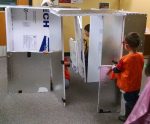
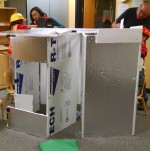
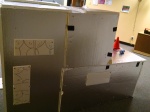
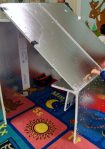
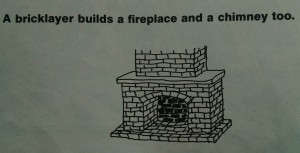
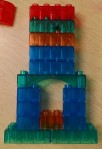
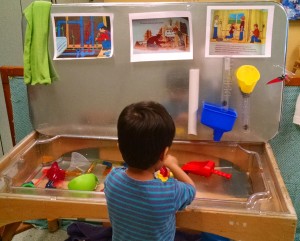
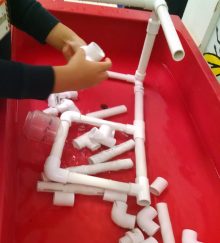
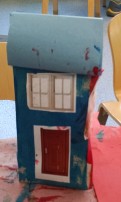

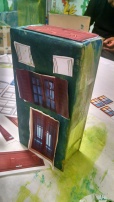





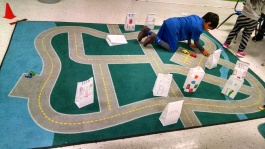
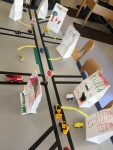
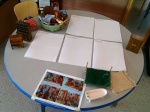
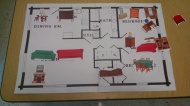
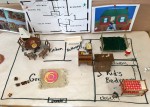
[…] If I Built a House […]
LikeLike
[…] If I Built a House […]
LikeLike
[…] If I Built a House […]
LikeLike
[…] If I Built a House […]
LikeLike
[…] Towers, Bridges & Tunnels, If I Built a House, Contraptions and Rube […]
LikeLike
[…] Theme: Build a House […]
LikeLike
[…] Theme: Build a House […]
LikeLike
[…] hammers to hammer golf tees into styrofoam blocks, pumpkins, and the foam insulation we use for our Build a House project. For 5 – 6 year olds, consider buying real tools – a small hammer, a hand […]
LikeLike
[…] Class. You can read more about it and see more pictures at this post about our class session called If I Built a House. That post also has lots of other ideas that could be adapted for a birthday party or preschool […]
LikeLike
[…] If I Built a House. Simplified (and healthier) gingerbread houses: graham crackers for walls, cream cheese or sunflower seed butter to be the “cement” to stick walls together. and dried fruits for decorations. […]
LikeLike
[…] Build a House […]
LikeLike
[…] dough, round wooden blocks to build tunnels around, and plastic animals to live in the tunnels. In Build a House week, all around the room, we are replicating parts of the home building process. Our sensory bin […]
LikeLike
[…] In our Build a House week, we replicate all the phases of house construction, including […]
LikeLike
[…] unit, we study Simple Machines, Electricity, Ways to Build Tall Structures and Strong Structures, Building Houses and Cars and Contraptions. We begin the unit by discussing the engineering […]
LikeLike
[…] they build today? We have lots of different building toys: Tinker Toys, gears, K’nex, KEVA, Crystal Climbers, Magna-Tiles, Lincoln Logs, Zoob, lots of Duplos or Legos and of course wooden blocks. (FYI, […]
LikeLike
[…] Build a House […]
LikeLike
[…] cheaper than Magna-Tiles, but I haven’t had a chance to compare quality), Lincoln Logs on House week, and Zoob on Skeleton week, and probably others I’m […]
LikeLike
[…] Check out more ideas for activities related to Building a House. […]
LikeLike
[…] do this project as part of our Engineering Unit, for the Build a House […]
LikeLike
[…] cheaper than Magna-Tiles, but I haven’t had a chance to compare quality), Lincoln Logs on House week, and Zoob on Skeleton week, and probably others I’m […]
LikeLike
[…] tees and toy hammers (I love these ones from Black and Decker – we also use them when we build houses from foam insulation panels). We pounded them into thick pieces of Styrofoam and into a pumpkin. […]
LikeLike
[…] topics that aren’t listed in those standards, like dinosaurs, space travel, cars, and construction, so definitely don’t limit yourself to these […]
LikeLike
[…] Learn more: Inventors of Tomorrow […]
LikeLike
[…] as high of quality, so I would choose Magna-Tiles if they’re in my budget), Lincoln Logs on House week, and Zoob on Skeleton week, and probably others I’m […]
LikeLike